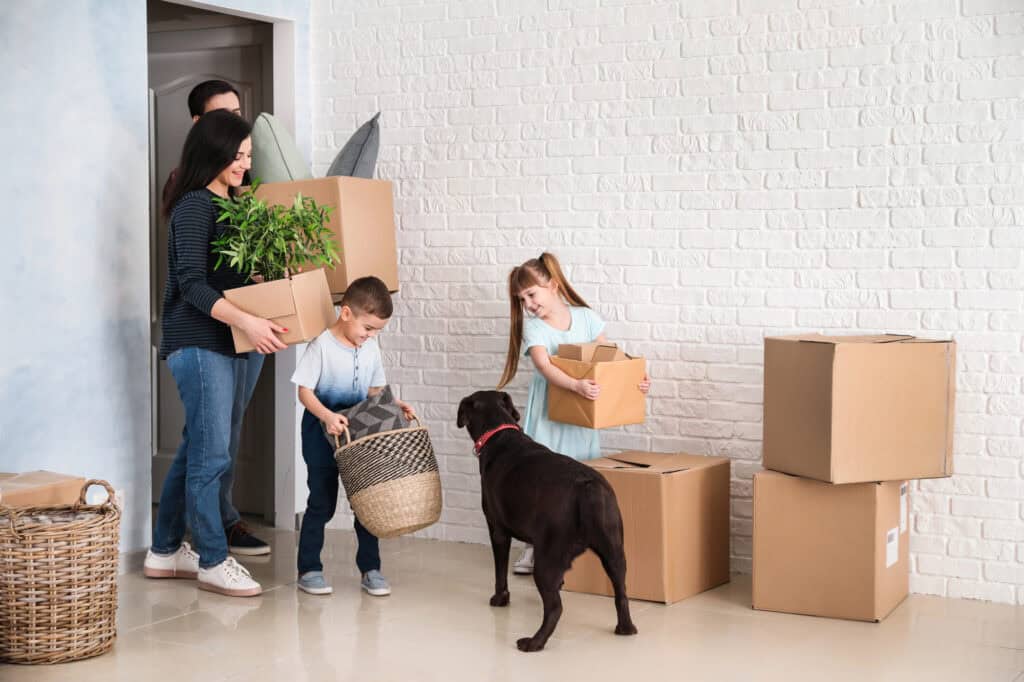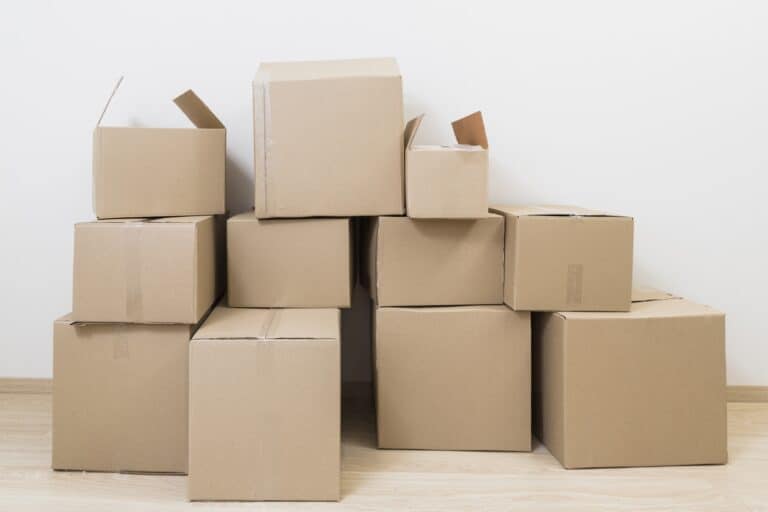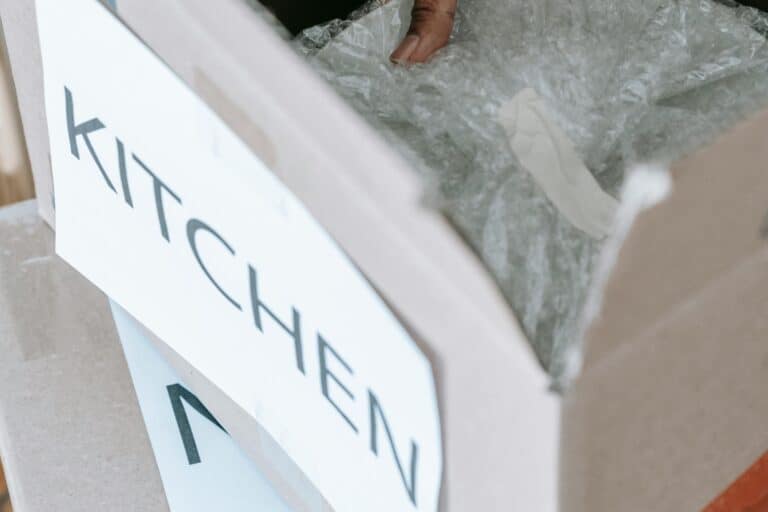Thinking about moving and feeling overwhelmed? A moving checklist can make the process easier and more manageable. This comprehensive guide will show you how to create a detailed moving checklist that helps you stay organized from start to finish. You’ll learn about setting realistic timelines, organising tasks efficiently, managing expenses effectively, and ensuring nothing is overlooked. With this guide, you can transform a stressful move into a smooth and hassle-free experience.
Key Takeaways
- A moving checklist promotes organisation, time management, and expense tracking, reducing stress and ensuring a smoother moving process.
- Start planning early by confirming your moving date, setting a budget, and organising important documents to prepare efficiently for the move.
- Two months before moving day, begin researching moving companies in South London, decluttering your home, and ordering supplies, progressively packing and updating addresses as the moving day approaches.
Why You Need a Moving Checklist
Moving can be a whirlwind of activity, and it’s easy to feel overwhelmed by the sheer number of tasks that need to be completed. A moving house checklist promotes organisation throughout the moving process. It divides the move into manageable steps, ensuring that no tasks are missed and you stay on track from two months before your move until the moving day itself.
Although moving can be stressful, a well-structured checklist can significantly alleviate it. A clear plan helps maintain organisation and prevent last-minute panics. Systematically going through each room and packing essentials allows you to complete critical tasks on time, thereby minimising the chaos that often accompanies moving.
Time management is another crucial aspect where a moving checklist shines. Setting deadlines for each task prevents rushing and ensures everything is packed and ready without feeling hurried. Moreover, a moving checklist aids in managing expenses, facilitating budget creation and expenditure tracking to prevent overspending during the move.
Getting Started with Your Moving Checklist
The first step in your moving journey is to confirm your moving date. Knowing the exact date will help you plan everything else around it. If you are renting, make sure to give your landlord notice of your moving-out date to avoid any complications.
Next, set a moving budget. Moving can be expensive, and having a clear budget will help you account for all necessary expenses like boxes, hiring a moving company, or renting a van. Keeping track of these expenses from the start will prevent any financial surprises down the line.
Organising all your important documents is another crucial step. Create a digital folder or a moving binder to keep all your financial, legal, and medical records together. This will save you time and stress when you need to access these documents during the move.
Two Months Before Moving Day
Two months before your move, it’s time to start researching for South London moving companies. Request on-site estimates to find a service that fits your budget and needs. Booking a moving truck early ensures you get the best rates and availability.
Contact your utility suppliers, including your internet connection provider, to inform them about your move. This ensures a smooth transition of services to your new property and prevents any disruption on moving day.

Another important task is decluttering your home. Begin by sorting and purging each room to decide what to keep and what to discard. This not only saves time and effort but also reduces the number of items you need to pack and move.
Ordering moving supplies such as boxes, tape, and speciality containers should also be done six weeks in advance.
One Month Before Moving Day
With one month to go, it’s time to start packing non-essential items. Begin packing things you won’t need in the immediate future, such as seasonal clothes, books, and decorative items. Make sure to label boxes with the room they belong to in your new home, which will make unpacking much easier.
Proper labelling of boxes ensures you know exactly what’s inside each one and prevents you from having to search through multiple boxes to find what you need. This systematic approach will save you a lot of time and frustration when you start unpacking.
Don’t forget to notify friends and family of your new address. Sending out one big email with your new contact information and moving date can save you time and ensure everyone is informed.
Two Weeks Before Moving Day
Two weeks before your move, it’s crucial to update your address with various institutions. Start with the electoral roll and regular bill service providers such as your mobile phone and broadband companies.
Continue packing, focusing on labelling each box with its contents and the destination room. This will help you stay organized and make the unpacking process smoother.
If you’re moving to a new area, register with a local GP and transfer your prescriptions to a pharmacy in your new city. This ensures that you have continuous access to medical care and medications.
One Week Before Moving Day
With only a week left, you should start disassembling large furniture items and pack a 24-hour moving kit. Ensure all items are packed and ready before moving day.
Begin cleaning empty rooms and ensure all belongings are organized by the end of the week. This will make the final moving day less hectic and ensure you don’t leave anything behind.
Prepare your new house before moving in. This includes cleaning the property, checking the utilities, and taking final meter readings. A clean and ready home will make your move-in process much smoother.
Moving Day Essentials
On a moving day, having a separate bag or box with a few items, especially essential ones, can be a game-changer. Pack all your essential bathroom items together in one large travel bag for easy access.
Include a first aid kit, snacks, provisions for the next day’s breakfast, a kettle, instant coffee or tea, and bottled water in your survival kit.
Don’t forget to pack basic tools, an overnight bag for each family member, phone chargers, light bulbs, and a torch. If you have young children, pack some books, games, and soft toys to keep them occupied during the move.
After Moving Day
Even after the move, your checklist continues to be a valuable tool, guiding you to systematically unpack and set up your new home. Start by taking photos of the rooms, checking utilities, and unpacking your essentials box.
Unpack all the boxes and consider giving away the used boxes if they are in good condition. This helps keep your new home clutter-free and can be a kind gesture to someone else who might need them.
Finally, update your address with various institutions, including your bank, and consider leaving a review for the moving company to share your experience and help others in their moving process.
Tips for Moving with Family Members

When moving with family members, additional planning and communication become necessary. Here are some steps to follow:
- Inform children about the move and what to expect on the day, ideally six weeks ahead.
- Arrange for children’s school records to be transferred to the new school district.
- Ensure children are comfortable with the transition.
On a moving day, keep children and pets occupied and away from the moving process. This can be achieved by having toys or tablets on hand or sending pets to kennels for the day. Enlisting help from friends or family to look after younger children can also make the move smoother.
How to Stay Organized During the Move
Organisation is pivotal for a successful move. A moving binder assists in keeping track of estimates, receipts, and an inventory of items being moved. Create a master moving binder to consolidate all tasks and documents in one place.
Using moving apps like Sortly can also be beneficial. These apps allow you to create a visual inventory of your belongings with photos and notes, making the packing and unpacking process much more manageable.
Summary
In summary, a moving checklist is an essential tool for anyone planning a move. It helps maintain organisation, reduce stress, manage time, and track expenses effectively. By following a structured plan, you can ensure that no tasks are overlooked and that your move goes as smoothly as possible. Staying organized and prepared from two months before the move until after moving day is crucial. By using a moving checklist, you can transform a potentially chaotic process into a manageable and even enjoyable experience.
Frequently Asked Questions
Why is a moving checklist important?
A moving checklist is important because it helps maintain organisation, reduce stress, manage time, and track expenses throughout the entire moving process. It ensures a smoother and more organized transition.
When should I start creating my moving checklist?
You should start creating your moving checklist two months before your move to allow yourself enough time to plan and complete all the essential tasks.
How can I stay organized during the move?
To stay organized during the move, use a moving binder or app to consolidate tasks, documents, and inventory in one place. This will help you keep track of everything efficiently.
What should I do two weeks before moving day?
Two weeks before moving day, you should update your address, continue packing, and register with a local GP if needed. These tasks will help ensure a smooth transition to your new home.
How can I make moving with family members easier?
To make moving with family members easier, communicate openly with your children about the move, transfer their school records, and ensure their safety and comfort during the process. This will help to alleviate any stress or uncertainty they may have about the move.







